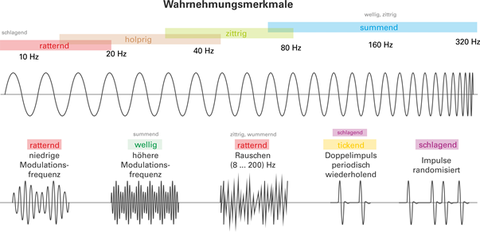Vibration Perception
Whole-body vibrations (WBV) are an integral part of daily life experience. A thorough understanding of human vibration perception is necessary, e.g., for both the design of multi-modal virtual environments as well as the evaluation of comfort in the automotive industry.
Most WBV that we are experiencing are produced by mechanical devices, for example by moving vehicles. Other situation where we experience WBV might be concerts, when the bass near the loudspeaker can be perceived throughout the whole body or in church, when the pews start to resonate when the organ is playing.
Historically, focus of WBV research has been on the influence on health and well-being and the reduction of overall vibration exposure. Technical progress draws attention to other fields of study such as comfort for the user in certain situations. Fundamental signal characteristics, for example frequency, intensity, signal type as well as masking effects influence the perception of WBV. While the reduction of WBV is one side of the medal, for example in entertainment situation additional vibration can improve the overall perception of the situation.

Perceptional descriptors for vertical WBV depending on signal type and frequency
Our chair aims to understand the basics for WBV perception in detail. Which signal types influence the perception how, and which parameters are driving changes in perception. Different hardware setup exits to study these question, for example the Multi Modal Lab with its vibration platform, offering six degrees of freedom (Hexapod) as well as different vibration seats on the basis of electro-dynamic shakers.
Contact
Mitarbeiter
NameMr Dr.-Ing. Sebastian Merchel
Send encrypted email via the SecureMail portal (for TUD external users only).
Professur für Akustik und Haptik
Professur für Akustik und Haptik
Besucheradresse:
Barkhausenbau, Raum BAR 59 Helmholtzstraße 18
01062 Dresden
None
